- 9 April 2024
- Posted by: Canberra Innovation Network
- Categories: Feature, General News, Startup Stories & Profiles

Article originally published on Moore Street Journal and written by Serina Bird.
Many people in the innovation ecosystem will have met Dr Craig Davis, General Manager of Growth Programs at the Canberra Innovation Network (CBRIN), or done one of the accelerator programs or courses he runs. But do you know the backstory about the successful business he built with his wife and two other business partners? Editor Serina Bird shares his story.
The Big Bang theory
Dr Craig Davis’s first career sounded like something from the Big Bang Theory. After completing a Ph.D. at the University of Sydney, he went to Cambridge University, where he completed a Postdoc in physics. He loved this career and did not intend to leave it – until he needed to return to Australia in 1995 for family reasons.
“Defence does a lot of smart, innovative things” — Dr Craig Davis
On his return, Craig found a job at the Australian National University (ANU) in a cross-disciplinary role, where he worked on innovative applications with an industry partner. Given his background, you might expect him to become a senior lecturer in physics and fashion a career as an Australian Einstein.
Then he heard the Department of Defence was searching for people who were good with numbers. ‘Defence does a lot of smart, innovative things,’ said Craig of the work. At that time, Defence had a project to bring together a group of people with physics or numeracy expertise to take a fresh look at some technical projects and to get some different perspectives. ‘It was like a think tank within the division,’ Craig said about the project.
Geopolitics and terrorism career
Usually, people with technical skill sets, such as physics, tend to spend their lives working in technical areas. But within a few years, Craig unexpectedly found himself leading a group of analysts working on geopolitical issues including terrorism. This happened just as Australia and the Western world began grappling with a growing Islamist terrorist threat.
In the post-world war environment of the late 1990s, Australia’s international security situation was calm. Many believed there was little threat of our nation being swept up in global insecurity. Few had heard of Usama bin Laden or other Islamist terrorist groups. Australia’s defence force involvement in the world was mainly through small UN deployments.
But then everything changed. Having already pivoted careers once, Craig found himself deeply involved in Australia’s response to the huge challenges of terrorism, including our involvement in Afghanistan and Iraq. He could have spent the rest of his life in senior government roles or strategic advisory work. But behind the backdrop of long hours and deadlines in his day job, a new opportunity was forming.
Kitchen table business
Back on the home front, Craig’s wife Michelle was also pivoting and becoming an expert in an emerging area. She had studied law and trained as a lawyer. Then, once the couple had children, she decided to work from home and struggled to find meaningful work that she could do flexibly. Working from home was not the norm as it is today.
“I was always thinking, why is this being done? What are we trying to achieve, and how do we do it?” — Dr Craig Davis
Michelle was good with computers, and someone asked her to build a website for them. And then, because she did it so well, she was asked to do more – and that became her business. She founded a website development business that, at its height, employed several people in the emerging area of website design.
Craig developed an interest in his wife’s growing business. His ‘side hustle’ after a busy day at work was talking with her clients to understand their business needs. Back then, anyone who wanted a website was a super early adopter. ‘They were all very entrepreneurial, very cutting edge,’ Craig said, recounting that he met some interesting people and enjoyed learning about their businesses.
Craig would ask detailed questions about their business and the purpose of the website. ‘People would often say, well, it’s the latest thing, so online must be good, right?’ However, drilling down further, his questions helped develop a deeper understanding of their client’s business models to ensure their online presence matched their business needs. ‘It could be as simple as finding out if they wanted people to call them. If the answer was yes, you needed to include their phone number on the website,’ he said.
Craig became keenly interested in building a successful online business. ‘I was always thinking, why is this being done?’ he recounted. ‘What are we trying to achieve, and how do we do it?’
And then, an idea was born.
Take a Break
Have you ever stayed in an Airbnb? Or did you wish you had the idea for the company? Craig and his wife didn’t create Airbnb, but they were involved in founding a successful online business that was a precursor to it.
One day in about 2002, Michelle’s sister, Penny, and her husband, Paul, visited Craig and Michelle with an idea for creating a business that would make it easier to book holiday rentals online. They had a catchy name (Take a Break) and some good concepts. They wanted Michelle to build a website and had high hopes that success would soon follow.
‘I knew enough about online business at the time to say, well look, I don’t think it will be easy, but guess what, let’s really look at this,’ Craig recounted.
The four of them went through reams of butcher’s paper during brainstorming sessions and committed to working together. His brother-in-law kept his day job. Craig continued working for a while before quitting his job to work on it ‘nearly’ full time with Penny and Michelle, who supplemented income through consulting. It was a hard decision to leave his public service career.
Building the business
In the early days of building the business, a key focus was getting listings from holiday homes. Then, they realised the main challenge wasn’t finding holiday homes but people who wanted to book them for a holiday.
To do this, they had to think innovatively about marketing strategies. The four of them became focused on marketing. ‘We read some business books. Penny had a degree in marketing, and had authored a book on marketing, and was running a good marketing consultancy business. So, we had fantastic talent on our team,’ said Craig. ‘But that was only what got us to the start line. Then we had to keep learning as we went.’
Their marketing took place at the beginning of the growth of online businesses and before the advent of social media. ‘A lot of the tactics we were using for an internet-based business in the early 2000s were evolving,’ said Craig. ‘The way you dealt with Google was totally novel. Google only started paid advertising in the way they’ve been doing for a couple of decades during that time. So, there were always lots of changes, and it had to be very responsive.’
‘We tried lots of things. Some worked better than others. We had great theories. In the end, every day, we just cared about it. We thought, what can we do today to find more bookings? That might be an oversimplification, but it’s certainly how it worked out,’ he said.
Investors calling
A few years after Craig went full-time on the business, Take a Break started to get cold calls from investors. A large listed public media company approached it and offered to purchase 40% of the company. The deal was pitched as more of a partnership than an investment.
“We did a whole bunch of due diligence from a camper van” — Dr Craig Davis
‘They got excited and made some offers. We were a bit excited. Then we thought – no, it won’t work. We told them no. They said, okay, fair enough. We went on holidays. Then they said, “Actually, we’ll do what you suggested – the deal’s back on again”. And we did a whole bunch of due diligence from a camper van.’
Craig and Michelle were on holiday in England, touring in a campervan while the deal was being negotiated. It rained every day. WiFi was not yet commonplace, and it was challenging to find places to park the camper van where there was an internet connection.
But the Global Financial Crisis (GFC) happened, and the deal fell through.
‘Then it was back to business,’ Craig said. They encountered the ‘usual’ business challenges, such as the avian flu and the GFC. ‘Tourism is a really volatile sector. It’s often the first to be hit by changes. For instance, if there’s a story in the news on Tuesday about petrol prices going up, you will see a downturn in accommodation bookings by that weekend.’ And the company’s trajectory wasn’t just up – at one point, they even had to downsize.
Staying with the enemy
Take a Break built a relationship with one of their competitors (Jason Butterworth, founder of Rentahome). ‘He was a smart business person running a competing company,’ said Craig. ‘We had a bit of dancing around because it’s difficult to talk to your competitors. But we were able to find a way to navigate it, and we merged the two companies, which made the business reach a critical mass. He was really strong with the real estate end of town, while we were strong with independent property owners. We combined the two.’
Then, when news of the merger came out, they were approached by the then-leading US travel accommodation company, which was called Homeaway. Homeaway offered to buy the business, but instead, the business owners decided to put the business on the market. With the help of advisors, they invited people to make offers and received several offers. The successful offer was from Fairfax Media’s Stayz platform.
Have you enjoyed learning more about Craig? In Part 2, find out how Craig went from cofounder of a company sold to Stayz, to angel investor and Canberra Innovation Network mentor.

